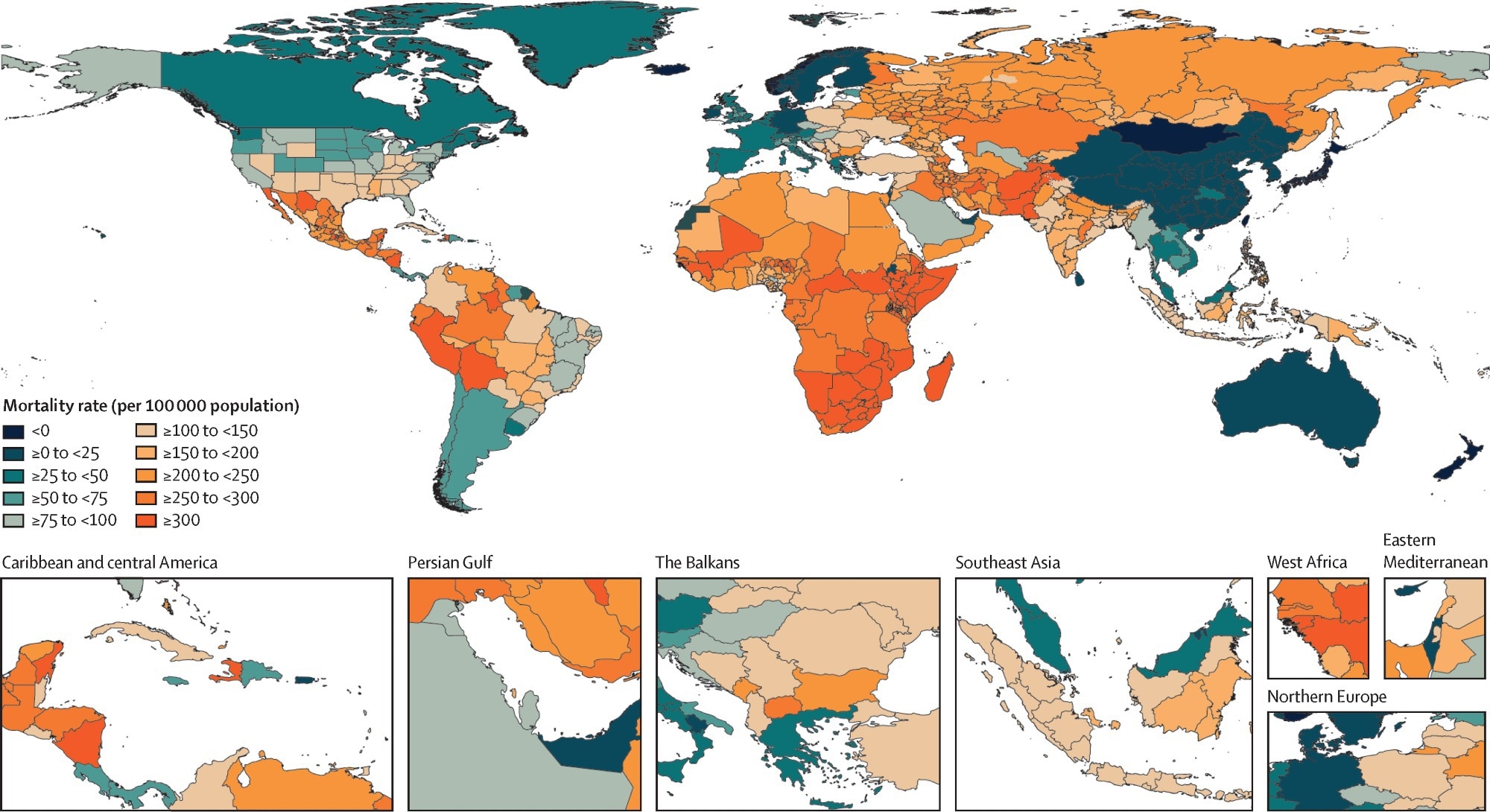The COVID-19 pandemic has underscored the importance of understanding demographic trends to inform public health policies and prepare for future challenges. Analyzing mortality, life expectancy, and population growth provides insight into health risks, aids resource allocation, and guides development planning. The Global Burden of Diseases, Injuries, and Risk Factors Study (GBD) 2021 enhances this understanding by incorporating pandemic data, offering a detailed view of global health from 1950 to 2021. Further research is needed to continuously update and refine our understanding of demographic trends and their impacts on global health, particularly in the aftermath of the COVID-19 pandemic and emerging health challenges.
About the study
The GBD 2021 iteration updated demographic estimates with the latest data and methods, refining the methodology from GBD 2019 and incorporating the impact of the COVID-19 pandemic. This comprehensive approach involved estimating fertility and mortality rates, adjusting for Human Immunodeficiency Virus (HIV) impacts and pandemic-related excess mortality, and accounting for demographic discontinuities like wars and natural disasters to refine population size estimates. Adhering to the Guidelines for Accurate and Transparent Health Estimates Reporting (GATHER), the study used Python, Stata, and R for statistical analysis and drew upon a vast array of data sources.
A significant innovation was the estimation of excess mortality due to COVID-19, defined as the observed versus expected all-cause mortality during 2020 and 2021, capturing both direct and indirect pandemic impacts. The study employed a Bayesian hierarchical model for population estimates, adjusted for new data and pandemic effects, covering 204 countries and territories, including subnational analyses for 21 countries. Through uncertainty analysis involving thousands of data draws, GBD 2021 offers a detailed view of global demographic changes and the profound impact of the COVID-19 pandemic, highlighting the dynamic interplay between health, demographic trends, and major global events.
Study results
The present study provides comprehensive insights into civil registration and vital statistics, highlighting global, regional, and national trends in demographic metrics, including key findings on the completeness of death registration systems. From 1975 to 2016, global death registration completeness improved significantly, peaking at 61.1% before experiencing a slight decline due to reporting lags. Notably, China and India saw significant advances, with peaks of 71.2% and 80.1% completeness, respectively. However, outside these countries, progress was more modest, especially in sub-Saharan Africa, where peak completeness barely reached 8.7%.

Global and GBD super-region all-cause mortality rates across the lifespan in females (A) and males (B), 1950–2021. Mortality rates are expressed as the number of deaths per 1000 population. Fatal discontinuities are indicated by the following letters: A=HIV epidemic; B=conflicts in the Middle East; C=war and genocide in India, Pakistan, and Bangladesh in 1971; D=war and genocide in Cambodia in the 1970s; E=Rwandan genocide in 1994; F=earthquake in Haiti in 2010; G=famine between 1959 and 1961. GBD=Global Burden of Diseases, Injuries, and Risk Factors Study.
The period from 1950 to 2019 witnessed a substantial decline in global age-standardized all-cause mortality rates, from 1980.5 to 736.1 per 100,000 population, reflecting a 62.8% reduction. Despite the overall improvement, the age group 15–39 years exhibited varying mortality trends due to several mortality shocks, including wars, the HIV epidemic, and natural disasters, with a distinct impact on male mortality rates. The COVID-19 pandemic reversed these declining mortality trends, especially among those aged 15 years and older, highlighting the pandemic's significant impact on global health.
Registration completeness varied significantly across regions, with marked improvements in Asia but slower progress in other areas. The study also detailed how the number of deaths due to all causes increased over time, reflecting population growth and aging. Remarkably, under-5 mortality continued to decline even during the pandemic, underscoring ongoing progress in child health.
Life expectancy trends revealed steady global increases from 1950 to 2019, with life expectancy at birth rising by 22.7 years. However, the pandemic led to a notable decrease in life expectancy across all regions, with varying impacts across different countries and territories. The study estimated 5.89 million and 9.97 million excess deaths globally for 2020 and 2021, respectively, due to the pandemic, with the highest excess mortality rates observed in Bulgaria and Lesotho.
Analyzing life expectancy against the Socio-demographic Index (SDI) showed that higher SDI levels were generally associated with longer life expectancies. However, the COVID-19 pandemic's impact on excess mortality rates highlighted that higher SDI levels did not consistently correlate with lower excess mortality rates, indicating the complex interplay of factors influencing pandemic outcomes across different regions.

Global distribution of age-standardized excess mortality rates due to the COVID-19 pandemic, 2020 and 2021 combined. Mortality rates are expressed as the number of deaths per 100,000 population. Excess mortality rates are negative in countries and territories where fewer deaths occurred than predicted.
The global population continued to grow, reaching 7.89 billion in 2021, with most growth concentrated in sub-Saharan Africa, South Asia, and Southeast Asia. Notably, the age structure of populations globally shifted towards older ages, with significant increases in the proportion of the population aged 65 years and older in many countries.
Journal reference:
- Austin E Schumacher, Hmwe Hmwe Kyu, Amirali Aali, et al.Global age-sex-specific mortality, life expectancy, and population estimates in 204 countries and territories and 811 subnational locations, 1950–2021, and the impact of the COVID-19 pandemic: a comprehensive demographic analysis for the Global Burden of Disease Study 2021, The Lancet (2024), DOI -10.1016/S0140-6736(24)00476-8, https://www.thelancet.com/journals/lancet/article/PIIS0140-6736(24)00476-8/fulltext